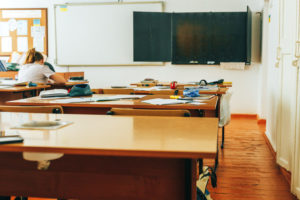UNESCO report highlights failure of high-tech to replace in-person schooling
A new report from the United Nations’ educational and cultural organization (UNESCO) found that dependence on technology to replace in-person schooling during the pandemic failed…

A new report from the United Nations’ educational and cultural organization (UNESCO) found that dependence on technology to replace in-person schooling during the pandemic failed worldwide.
While technology exacerbated existing gaps between low-income and high-income students in educational outcomes, regardless of access to technology, students across the board suffered from the lack of in-person schooling, concludes the report, “An Ed-Tech Tragedy?”
Should another pandemic occur, the 655 page report calls for countries to either resume in-person schooling more quickly, or pause schooling altogether until a crisis subsides.
The report “examines the numerous adverse and unintended consequences of the shift to ed-tec,’ said UNESCO. “It documents how technology-first solutions left a global majority of learners behind and details the many ways education was diminished even when technology was available and worked as intended.”
In the United States, powerful teachers’ unions pushed technology as an alternative to in- person learning, but the report found that “technology-mediated remote instruction proved to be of considerably lesser quality than face-to-face education.”
The outcomes were the same, regardless of the quality of access to technology, said UNESCO.
“[T]he available evidence suggests that learning outcomes declined dramatically when schools closed and remote learning with ed-tech was deployed as a replacement during the pandemic,” said the report. “This trend was observed in contexts where access to ed-tech was limited as well as in contexts where the availability of devices and connectivity was not a barrier to education.”
Further, technology caused the disengagement of students, who often abandoned schooling altogether as a result, said UNESCO.
“Throughout the Zoom meetings, I personally didn’t feel comfortable with it,” one university student in the U.S. told UNESCO researchers. “I get distracted easily, so it was not possible, and I gave up. I stopped showing up and I didn’t finish the last semester.”
An analysis by The New York Times and Stanford University showed that hundreds of thousands of students never returned to public school classrooms in the United States alone.
Some of those students, however, can be accounted for by transfers to alternative education institutions, in the case of U.S. schools.
A silver lining of the Stanford analysis shows unprecedented growth in private education during the pandemic.
“Other key research findings include a 4% growth in private-school enrollment between the 2019-2020 and 2021-2022 school years, and a ‘surprisingly large and sustained growth’ in homeschool enrollment – 30%,” said the Stanford report. “The growth in private school enrollment accounts for 14% of the public school enrollment loss and homeschool growth accounts for 26%” of that loss.
The UNESCO report found that reliance on technology cut actual instruction time by 50%.
“A 2020 survey of households in California … revealed that in a typical week, students had only three hours of live contact via phone or computer with their teachers, a fraction of the time that would have been standard at an in-person school,” said UNESCO.
The findings are at odds with the acolytes of education technology, who claimed, even in the midst of the pandemic, that the deployment of technology would enhance educational outcomes.
But the findings line-up well with the across-the-board declines witnessed in standardized testing by U.S. students as a result of the pandemic lockdowns.
Those declines stand in contrast to schools that remained open, which showed students’ test scores remaining steady.



